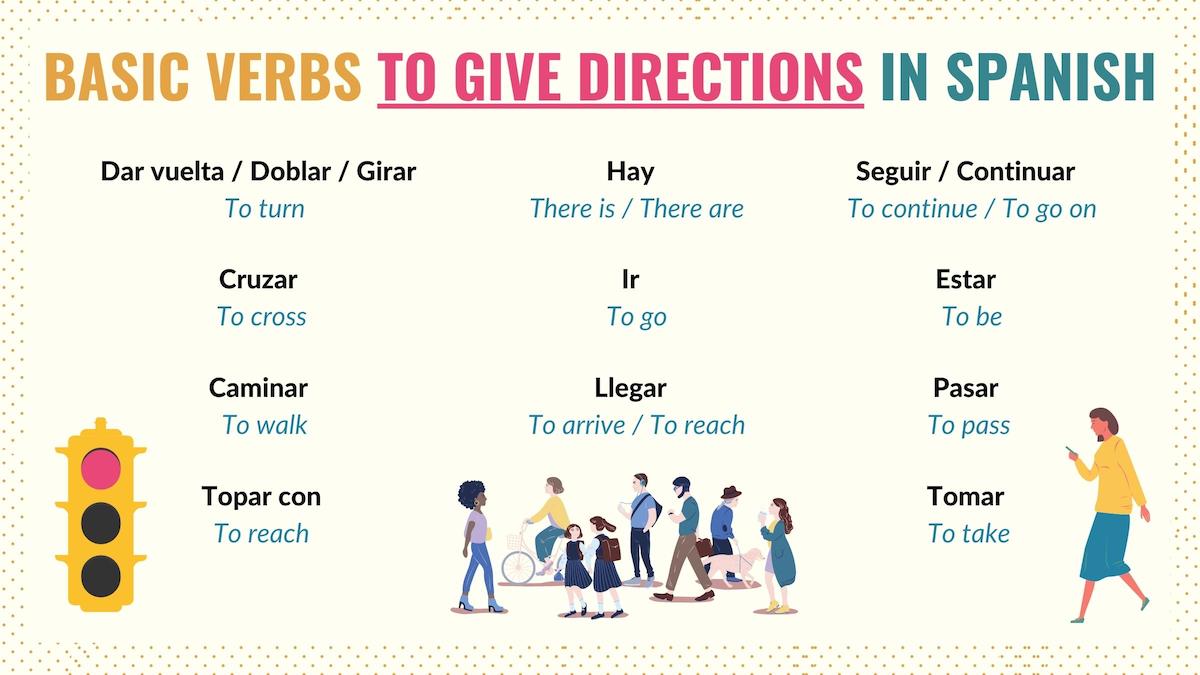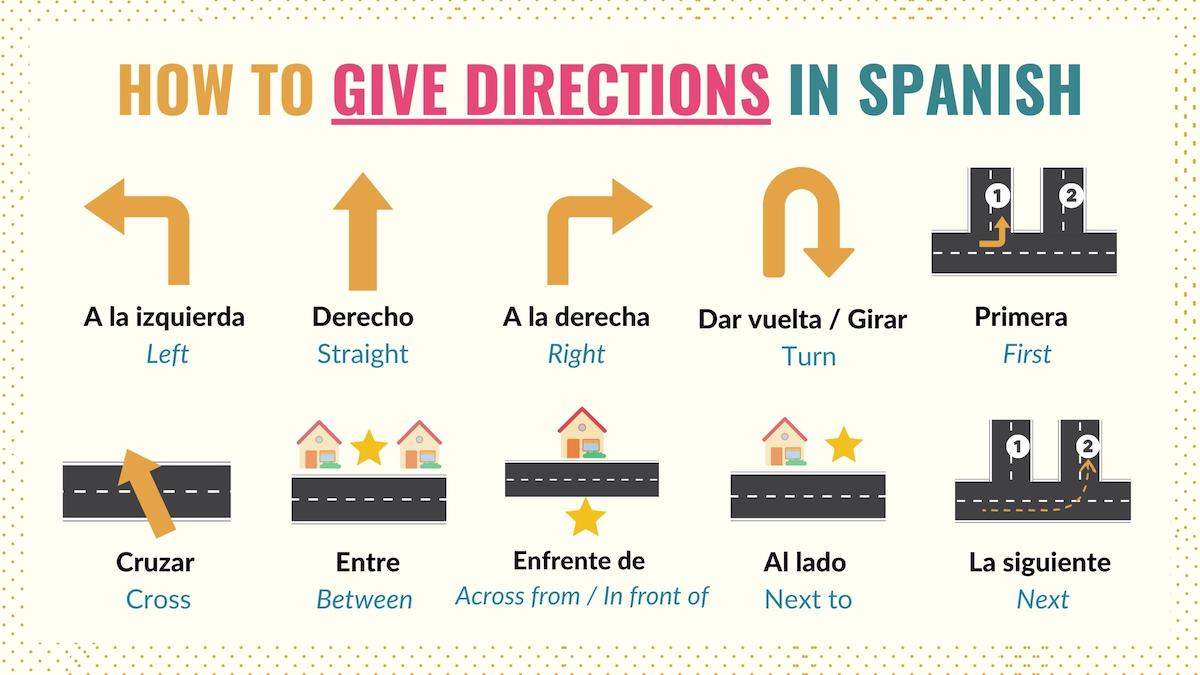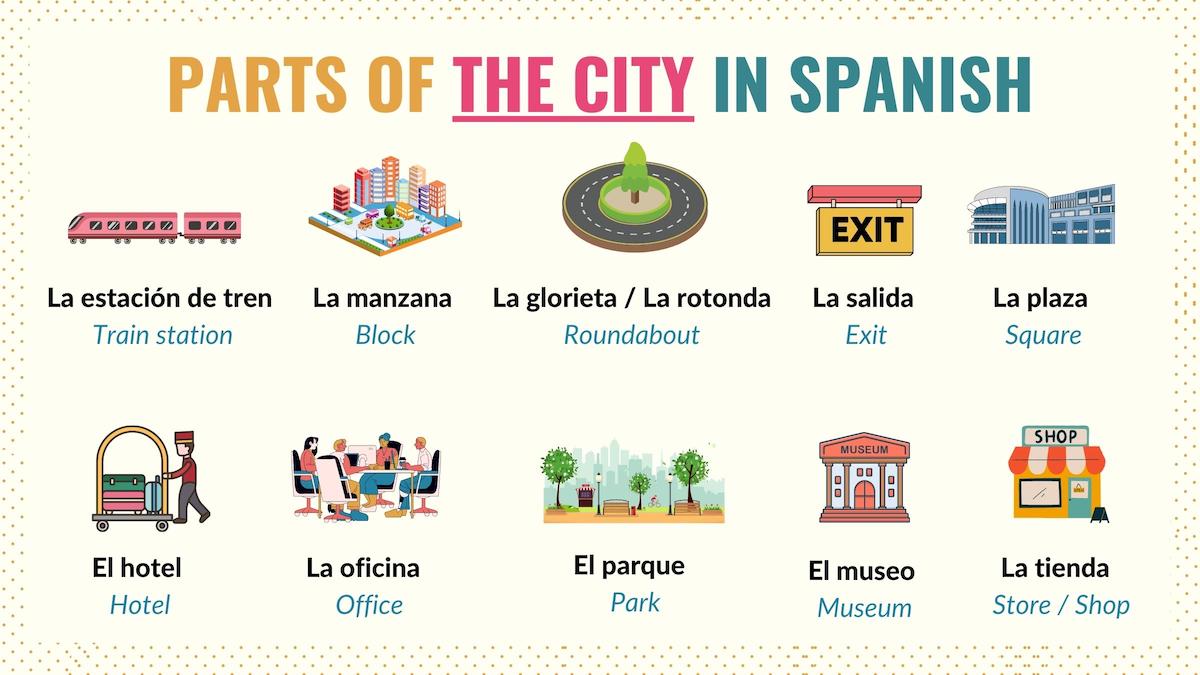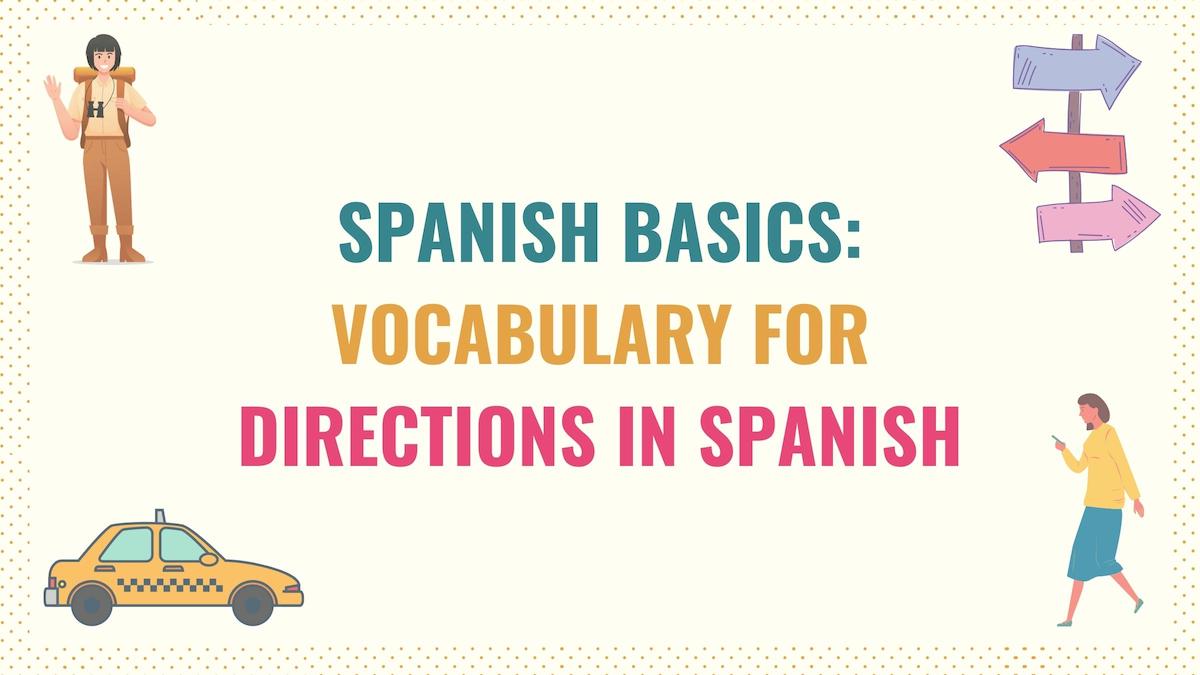Whether you’re a tourist or live in a Spanish-speaking country, giving and asking directions in Spanish is a basic skill that can come in handy. So, in this guide, you’ll find the top words, verbs, questions, and expressions you need to know to get on with ease in this context.
Here is an overview of what we’ll cover:
Let’s do this!
How to Ask for Directions in Spanish
The most common questions to ask for directions in Spanish are:
- ¿Dónde está…? – Where is the…?
- ¿Donde se encuentra…? – Where is the…located?
- ¿Hay algún…?* – Is there a…?
- ¿Hay alguna…? – Is there a…?
- ¿Cómo puedo llegar a…? – How can I get to…?
- ¿Cómo llego a…? – How do I get to the…?
- ¿Por dónde está…? Which way is the…?
- Estoy buscando… – I’m looking for…
Like in English, you must complete these Spanish expressions by adding the name of the place to which you want to go.
[Direction expression] + [article] + [place]
¿Dónde está el museo?
Where is the museum?
¿Por dónde está el parque?
Which way is the park?
¿Cómo llego a la estación de tren?
How do I get to the train station?
¿Hay alguna farmacia por aquí?
Is there a pharmacy around here?
The Spanish word hay is used to inquire about the existence of a place in a particular area, such as a town, neighborhood, or city.
Note that the previous questions are too straightforward. To soften these phrases and be more polite, you can combine them with the following expressions:
- Buenos días: Good morning
- Buenas noches: Good night
- Buenas tardes: Good afternoon / Good evening
- Disculpe / Disculpa: Excuse me
- Perdón: Sorry / Excuse me
- ¿Podría decirme…?: Could you tell me…?
Disculpe, ¿dónde hay un cajero?
Excuse me, where is an ATM?
Buenos días, ¿podría decirme dónde se encuentra la parada?
Good morning, can you tell me where the bus stop is?
Take Note: In Spanish, a + el is contracted (al) to ease the pronunciation. So, instead of saying ‘a el parque’, you must say ‘al parque’.
Vocabulary for Giving Directions in Spanish
Now that you know the most common ways to ask for directions in Spanish, here are some basic verbs and words you or someone else can use to give directions:
Basic verbs to give directions in Spanish

- Caminar: To walk
- Cruzar: To cross
- Dar vuelta / Doblar / Girar: To turn
- Estar: To be
- Hay: There is / There are
- Ir: To go
- Llegar: To arrive / To reach
- Pasar: To pass
- Seguir / Continuar: To continue / To go on
- Tomar: To take
- Topar con: To reach
Phrases, prepositions and adverbs of place:
- A una cuadra: One block away
- A la derecha: Right
- A la izquierda: Left
- A mano derecha: On the right
- A mano derecha: On the left
- Al lado: Next to
- Cerca de: Nearby / Close to
- Derecho: Straight
- Detrás de: Behind of
- En: In / On
- En dirección a: Toward / Towards
- Enfrente de: Across from / In front of
- Entre: Between
- Hasta: Until / Down to
- La siguiente: Next
- Por aquí: Around here
- Primera: First

Parts of the city in Spanish
- La avenida: Avenue
- El aeropuerto: Airport
- El banco: Bank
- La biblioteca: Library
- La calle: Street
- El cajero: ATM
- La cuadra: Block
- La escuela: School
- La estación de tren: Train station
- El hotel: Hotel
- La glorieta / La rotonda: Roundabout
- La manzana: Block
- El museo: Museum
- La iglesia: Church
- La oficina: Office
- La parada: Stop
- La plaza: Square
- El parque: Park
- El restaurante: Restaurant
- La salida: Exit
- La tienda: Store / Shop

Here are some examples combining this vocabulary:
El cajero está al lado de la farmacia.
The ATM is next to the pharmacy.
Camine dos cuadras y dé vuelta a la derecha.
Walk two blocks and turn right.
Siga derecho hasta llegar al parque.
Go straight until you reach the park.
La biblioteca está cruzando la calle, en medio del banco y la iglesia.
The library is across the street, between the bank and the avenue.
Key Points
Asking and giving directions in Spanish is an essential skill that you may need when visiting a Spanish-speaking country. Here are some key points you should remember:
- The verb estar in Spanish is used to express location.
- Use the impersonal word ‘hay’ to ask or indicate the existence of something in a particular location.
- ¿Dónde está? is the most common way to ask for something’s location.
- ‘Caminar’, ‘seguir’, ‘cruzar’, and ‘dar vuelta’ are some of the most common verbs to give directions.
- Spanish prepositions of place and adverbs allow you to express more precisely where something is.
- Use greetings in Spanish to pose questions more politely.
- Contract ‘a + el’ into ‘al’ to smooth the pronunciation which means ‘to the’ or ‘at the’.
Next Steps: Additional Resources for Spanish Directions
Now that you have a basic understanding of how to ask and give directions, learning some prepositions of place in Spanish and adverbs can help you describe more precisely where places and things are located.
Additionally, check how to form regular imperatives since these are the conjugations we use when giving directions in Spanish. Since it allows you to express where things are, you should check how to use estar and how to conjugate this verb.
If you’re a tourist, there are different Spanish for travelers resources that can help you learn the vocabulary you need to communicate in common situations. I recommend checking out my list of the top 91 Spanish travel phrases and words for tourists.



